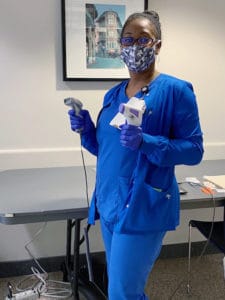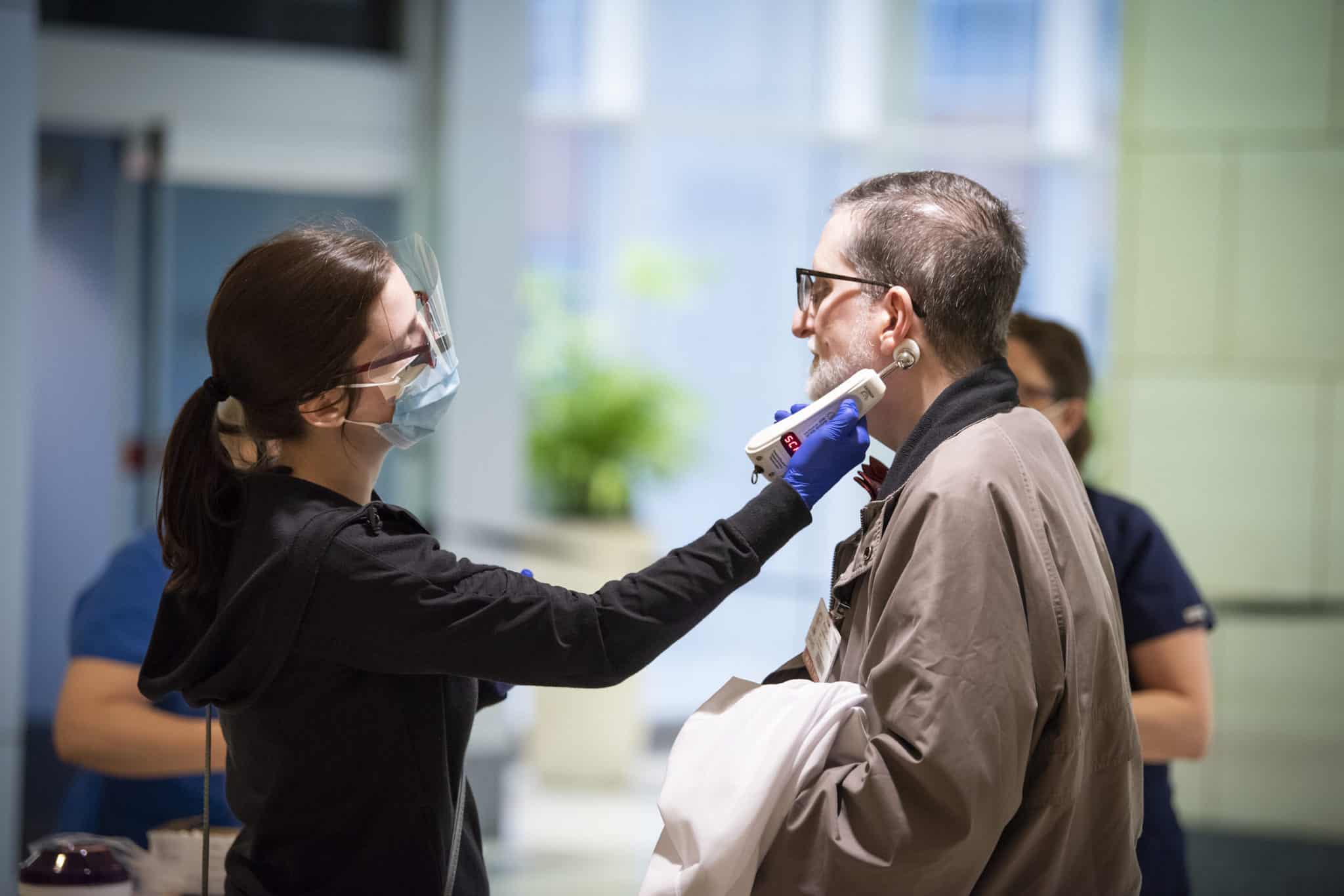Dental Clinic Staff Volunteer at UAMS’ COVID Screening Stations
| When COVID-19 appeared in Arkansas in March, it affected all operations at the University of Arkansas for Medical Sciences, including the UAMS Delta Dental of Arkansas Foundation Oral Health Clinic.
As the clinic shifted to providing only urgent care procedures as directed by the Arkansas Department of Health, leadership in the College of Health Professions (CHP) and in the clinic encouraged employees to volunteer in other areas of the hospital, said Wade Anderson, associate dean of administrative affairs and interim clinic manager.

Stacy Thurston, a dental assistant in the UAMS Delta Dental of Arkansas Foundation Oral Health Clinic, volunteers at an employee and visitor screening entrance. Staff from the dental clinic were in charge of the screening at the entrance closest to Doc Java.
“It was important to us that our staff be a part of the solution with the COVID-19 pandemic and do our part to help the university and the hospital keep our employees and patients safe,” he said.
Eight registered dental assistants and one dental hygienist volunteered to work at the COVID-19 screening stations.
Stacy Thurston, a dental assistant and patient representative, was one such volunteer. She started out working the phone bank for the COVID-19 hotline at nights and on the weekends. Then Anderson arranged for employees from the Oral Health Clinic to be in charge of screening at the Doc Java entrance. Clinic employees also monitored the patient discharge area to make sure no one entered through the discharge doors.
Angela Bierman, Jonette Davis, Katherine Duck, Kaye Eason, Sharon Howard, Hayley Melvin, Courtney Teasley and Amanda Thompson joined Thurston as screening volunteers.
“These ladies all stepped up during a time of need,” said Anderson. “They worked extra hours and weekends and never said no. They were all difference makers who chose to help.”
The group volunteered for screening shifts of 5 a.m. to noon or noon to 7 p.m., Thurston said, working between 14 and 21 hours for two months. When the employees weren’t volunteering, they were seeing patients in the clinic.
For Thurston, there were benefits and disadvantages to working as a COVID-19 screener.
“At first, I was really apprehensive because we had no idea what we were dealing with and who had been exposed to it,” she said. “As time went on, I became a little more comfortable with the role, and definitely enjoyed the different hours because they gave me more time with my daughter.”
When the clinic reopened to more patients in late May, the volunteers resumed their regular shifts at the clinic, Anderson said.
Of course, the clinic doesn’t look the same as it did before COVID, both Thurston and Anderson said. Employees at the front desk wear face masks while those working in the clinic with patients are garbed in personal protective equipment.
Each room and the equipment within are sterilized and sanitized between each patient, Anderson said, adding that a room must also remain empty for a period of time to allow any aerosols to settle.
Thurston said the new protocols have taken some getting used to.
“It just takes some time to get used to this new normal way of life,” she said.
